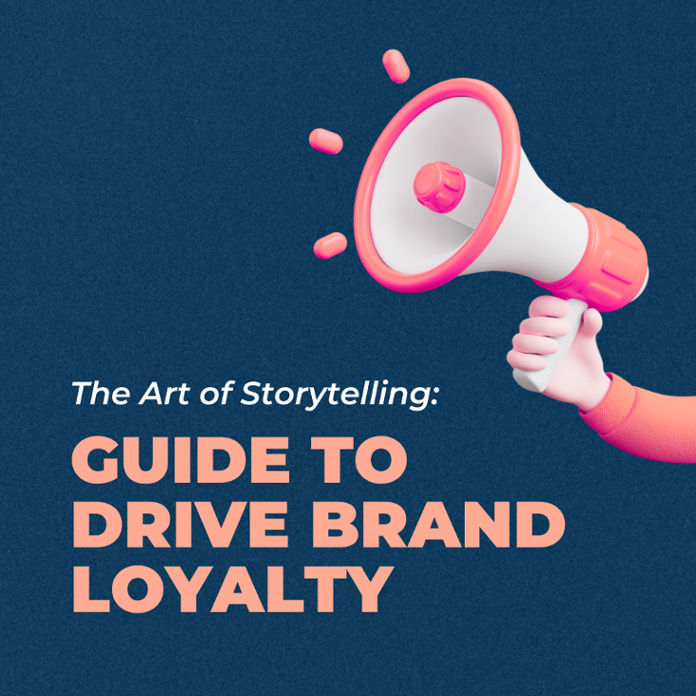Overview:
- Marketing is not just about creating a presence but crafting the voice of a brand.
- How a simple idea revolutionized the Japanese coffee industry.
- Creating a story is not about being fictional but being truthful.
- Non-conventional marketing is sometimes better than conventional.
Why Storytelling?
“Necessity is the mother of invention.” The ongoing digital era has necessitated strong branding for businesses to thrive. Do you ever wonder why it is so important? Or how you can do that for your own business?
We live in an era where everyone is chasing success and set for a never-ending rat race. It is surprisingly simple to gain a competitive edge in this digital world through the art of storytelling. Storytelling is just as important as the operational plans and strategies for a business.
Understanding the power of persistence, perception, confidence, and branding can transform a business from rags to riches. Let’s unfold the power of storytelling in branding together.
Importance of Storytelling in Branding
In the 1970s, when Japan’s economy was booming. Nestle came in to capitalize on the growing economy, and conducted surveys in Japan to find if the Japanese market liked coffee or not. Results stated that coffee has quite a catch on the Japanese market. Despite this positive feedback, Nestle failed to capture the Japanese market.
The company decided to bring in Clotaire Rapaille, a child psychologist, not a traditional marketer. Clotaire was famous for his out-of-the-box thinking; he believed that our brains cannot interpret human desires. Now, coming back to what Clotaire did for Nestlé’s campaign in Japan showed that human desires often transcend logical reasoning.
Clotaire and Nestle came up with the idea of Nestle Coffee Nips, coffee-flavored candies. These candies became popular very quickly in the Japanese market among kids. The presentation of the candies for kids had an impact on the market that created an identity for the brand.

Creating the Story for the Brand
Let me tell you a story that will make you rethink. This story is about a marketing professional – John.
John was naturally witty and a good marketing professional.
Now, analyzing the lines we used above, they made it very clear from the beginning that it’s a story and is fictional.
Coming on to that one question always comes across: Is storytelling in marketing ethical? Won’t it just be a fancy way to lie? Yes, storytelling is an ethical practice of marketing. There is just one simple demand– to make it truthful and present as it is. The point is that those lines clearly imply neither we nor our customers are impacted by the story. Still it is making the point as it should from the marketing point of view.
Remember that memorable advertisement campaign by Nike featuring a man who enters a room with a bunch of babies? And gives a speech about how one does not get to decide what their name is, where one comes from, or anything about life. The man states to the babies that they don’t get to decide where their story begins, but they do get to decide where the story ends. Then suddenly, a baby stands up, and the man yells yes, just as the tagline of Nike flashes, Just Do It.
Even data supports that campaigns linked to human emotions and themes of greatness perform better than aggressive campaigns. Ultimately, every marketing campaign revolves around the needs of the business and how it innovates to meet them and invent something.

Fake It Till You Make It Is Just Not a LIE
This strategy is not usually used, as it risks creating a brand identity and reputation built on lies. But, fake it till you make it can be one of the best strategies to grow brand presence when used wisely. While marketing efforts should always remain ethical and transparent, some brands have achieved high reputation and engagement by employing this strategy.
Take Airbnb, for instance– their success is not hidden from anyone. When Airbnb first launched, the founders of the brand used to create fake listings.Took pictures of their apartments, just to make the platform look more populated.
Another example is Instagram–now a hub of social media marketing that started with the founders creating fake profiles. To increase engagement for the platform to make it look more active. Something similar was done by the founders of Tinder. Wherein Dropbox created videos showcasing a better user base, which attracted more real users over time.
Branding Made Easy
Great ideas succeed through effective execution. There are numerous examples of brands in the market showcasing how to build a brand. Some even take bold moves to rebrand iconic brand images carried forward for generations. Like Jaguar’s transformation with its iconic logo to the “Copy Nothing” campaign.
Brand narratives are crafted not just to build an audience base but to ensure that they are recognized and remembered. In fact, phrases from famous ad campaigns have become part of our everyday language. For instance, Apple’s Think Different and Nike’s Just Do It are widely recognized examples.
Conclusion:
The key idea here is to understand the power of narratives and storytelling in branding. After all, for any idea to be tested, there’s always one guiding philosophy, “You won’t know, until you try!“


